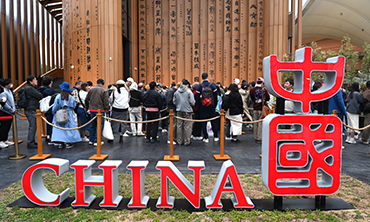

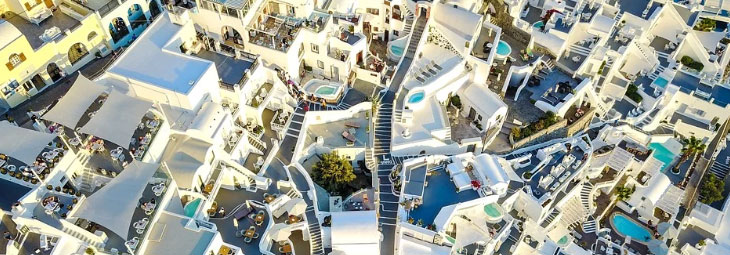
The 2025 Osaka-Kansai Expo (Osaka Expo) officially opened its doors on April 13. On the same day, the China Pavilion held its opening ceremony, officially welcoming visitors from around the world. Inspired by the concept of the “Chinese Scroll,” the pavilion holds many surprises within.
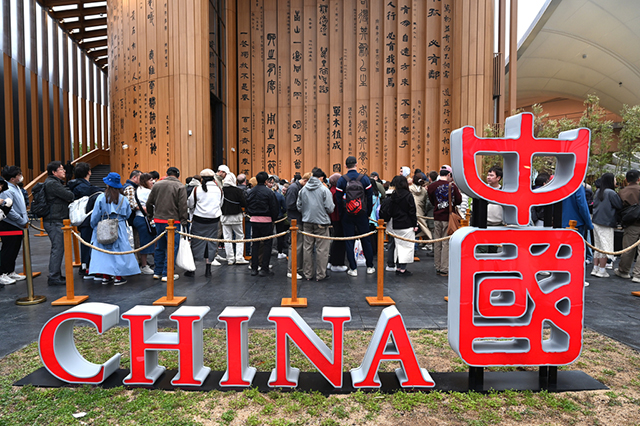
April 14, Osaka, Japan - The China Pavilion at the 2025 Osaka Expo. (Paper.cn/Dong Wu)
As one of the largest self-built foreign pavilions at this year’s Expo, the China Pavilion spans approximately 3,500 square meters. Its overall architectural design draws inspiration from the “Chinese Scroll,” creatively integrating culturally rich symbols such as bamboo, Chinese characters, and scrolls. By combining bamboo slips-an ancient medium for conveying information-with the advancements of today’s information age, the pavilion narrates China’s millennia-old history, showcases its ecological civilization efforts, and interprets the exhibition theme of “Building a Shared Future for Life on Earth - A Future Society of Green Development.”
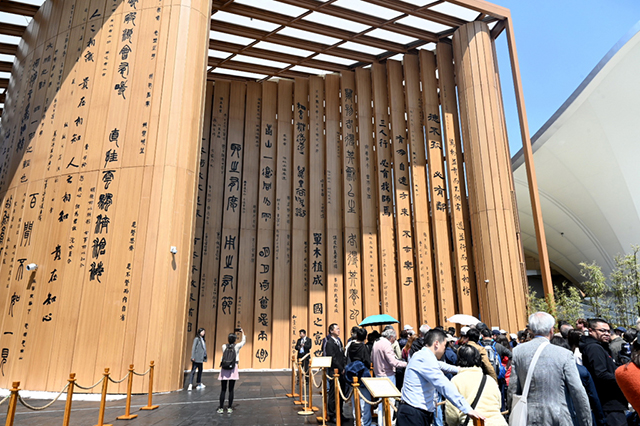
April 14, Osaka, Japan - Visitors line up to tour the China Pavilion.
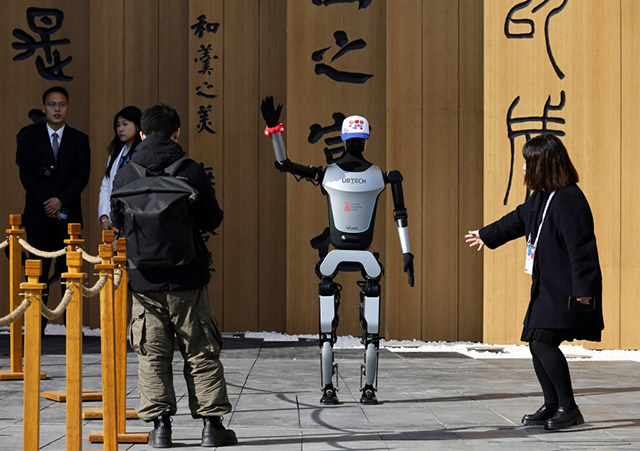
April 9, Osaka, western Japan - A robot inside the China Pavilion waves to visitors. (Visual China Group)
The pavilion's bamboo-yellow façade features 119 classic poetic lines engraved in five Chinese calligraphy styles: seal script (zhuan), clerical script (li), regular script (kai), running script (xing), and cursive script (cao). These excerpts come from classical works such as The Book of Songs, The Songs of Chu, and the Four Books and Five Classics. From the simple purity of “The ospreys cry on the islet in the river” (The Book of Songs) to the romantic determination of “The road ahead will be long and arduous, but I will search high and low” (The Songs of Chu), these timeless poems form a cultural treasury, allowing every visitor to experience the profound depth of Chinese civilization.
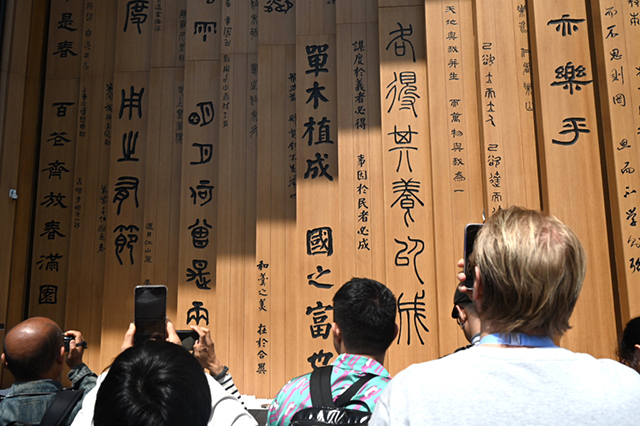
April 14, Osaka, Japan - While waiting in line, visitors read the poetry engraved on the exterior of the China Pavilion. (Paper.cn/Dong Wu)

The poetic lines, transformed into flowing streams of light and shadow, ripple and weave through the China Pavilion. (Paper.cn/Dong Wu)
The China Pavilion is divided into three themed zones: Harmony Between Heaven and Humanity, Lucid Waters and Lush Mountains, and Endless Vitality. Among the highlights are side-by-side displays of soil samples from both the near and far sides of the moon collected by China's Chang’e-5 and Chang’e-6 missions, a deep-sea submersible experience capsule of the Jiaolong, a next-generation humanoid robot, a large multimedia installation themed on the 24 Solar Terms, and a digital dynamic scroll painting based on Gengzhitu (Illustrations of Tilling and Weaving).
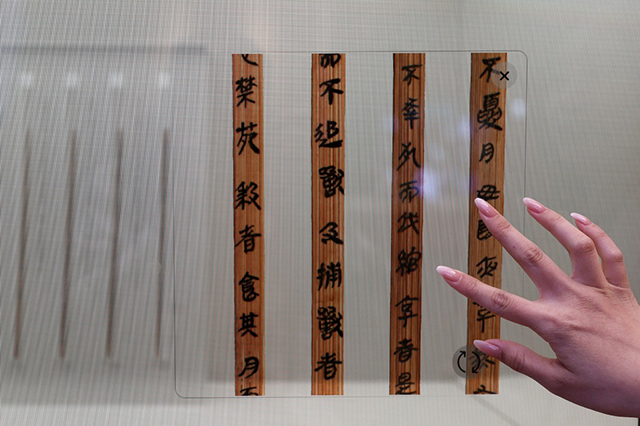
Ancient calligraphy works on display at the China Pavilion. (Visual China Group)
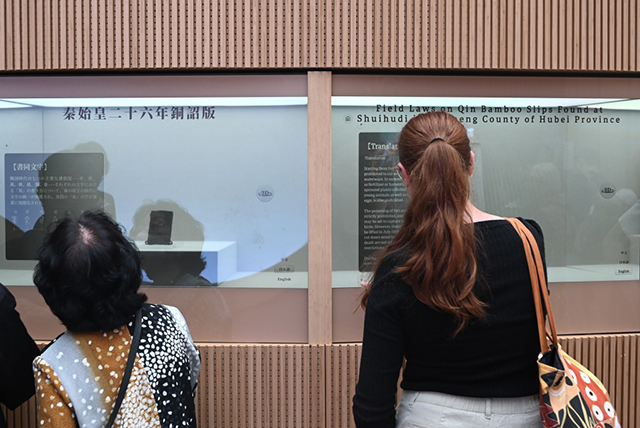
The China Pavilion showcases the evolution of Chinese characters, with six windows displaying six different script styles from Oracle Bone Script to Song Typeface. In the photo, the visitor on the left is reading the Japanese description, while the visitor on the right is reading the English version. (Paper.cn/Dong Wu)

Replicas of three cultural relics, including the Sanxingdui Bronze Sacred Tree, will be showcased at the China Pavilion. (Visual China Group)
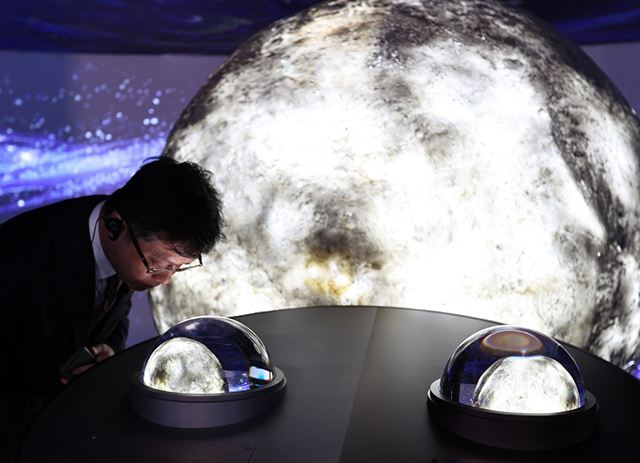
Lunar soil sample collected by the Chang’e-5 probe. (Xinhua News Agency)
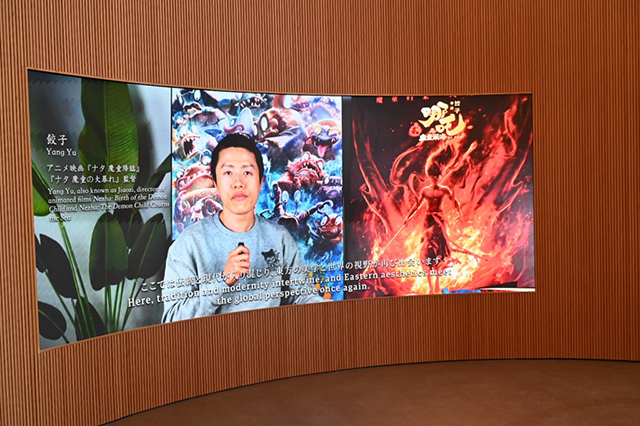
Jiaozi, director of Ne Zha 2, appears in the China Pavilion’s introductory video.(Paper.cn/Dong Wu)
On April 14, the China Pavilion hosted its first live performance with the debut of the “Kunqu Opera Enters the Expo” Theme Day. Actors from the Shanghai Kunqu Opera Troupe performed excerpts from classic operas such as The Peony Pavilion, Havoc in Heaven, A Stroll in the Garden, and The Palace of Eternal Life. A lecture on Kunqu art was also held on-site, attracting many visitors from around the world.

April 14, Osaka Expo - Actors from the Shanghai Kunqu Opera Troupe perform an excerpt from Havoc in Heaven at the China Pavilion. (Paper.cn/Dong Wu)
Eliska Vychodilova from the Czech Republic said it was her first time experiencing Kunqu Opera live and found the performance unique, also expressing admiration for the bamboo-forest-like design of the pavilion.
Lu Hairong, the event planner for the Kunqu Theme Day, stated that the event aims to promote theatrical exchange between China and Japan.
This is the first comprehensive World Expo held in Osaka in 55 years. With the theme “Designing Future Society for Our Lives,” the Expo has attracted participation from 158 countries and regions, as well as 7 international organizations. Pavilions explore themes such as “life” and “circulation” using exhibitions and multimedia technology to showcase visions for future societies and their unique cultures.
The Expo site is located on Yumeshima, an artificial island in western Osaka, covering about 155 hectares. The event will run until October 13, with an expected 28 million visitors. The site is open daily from 9 a.m. to 10 p.m.
Source from : Dong Wu and Xue Jing, the Paper, Apr. 15, 2025, <https://www.thepaper.cn/newsDetail_forward_30640983>
Translated By Jingyuan Zhang